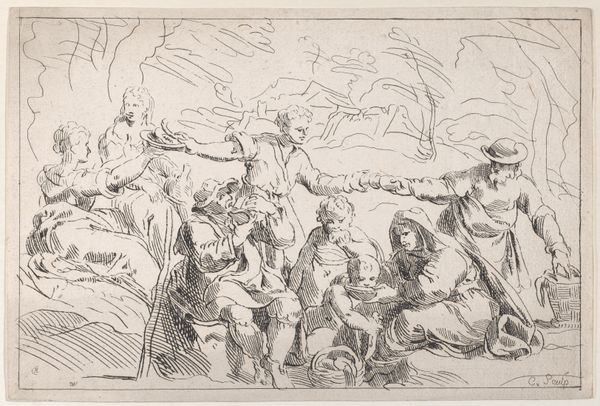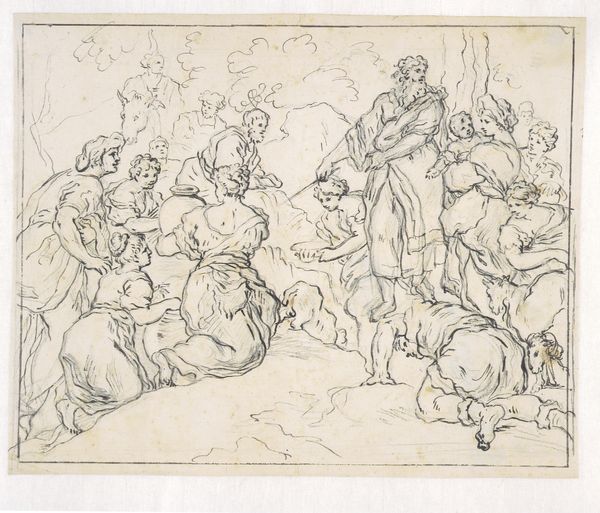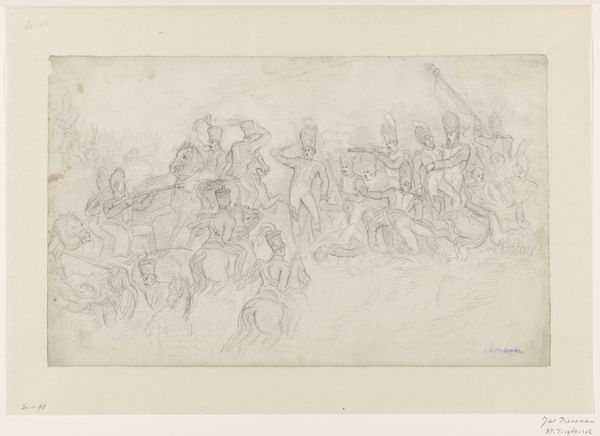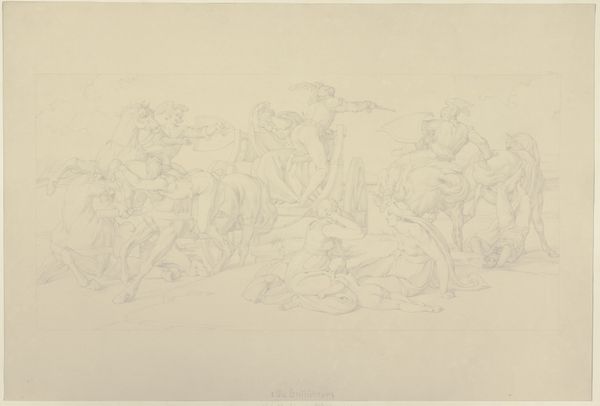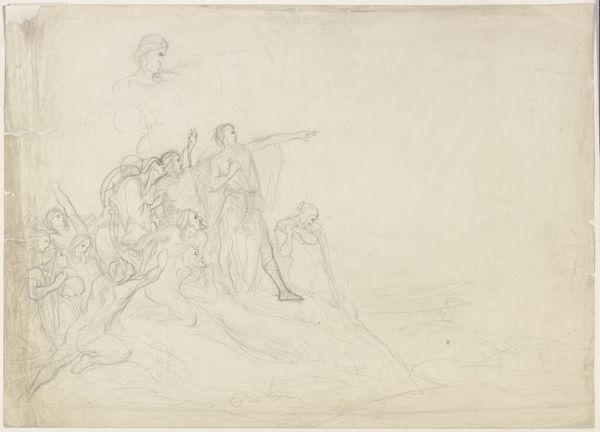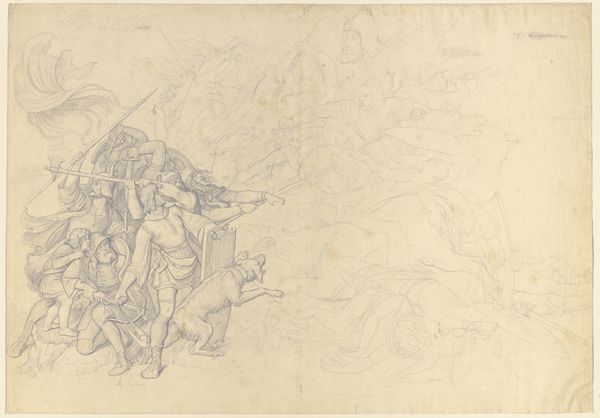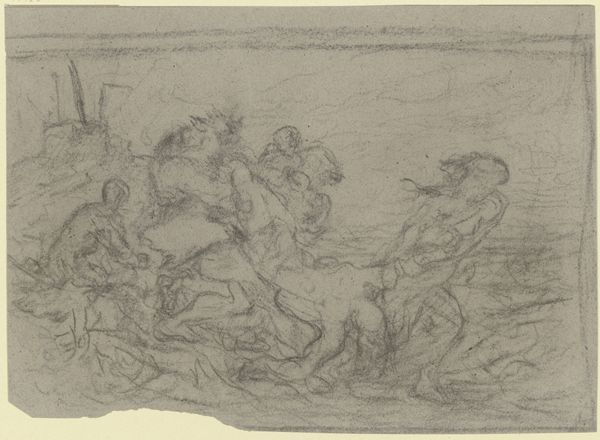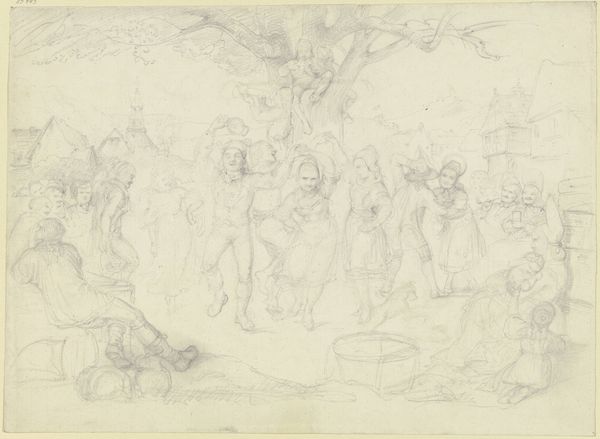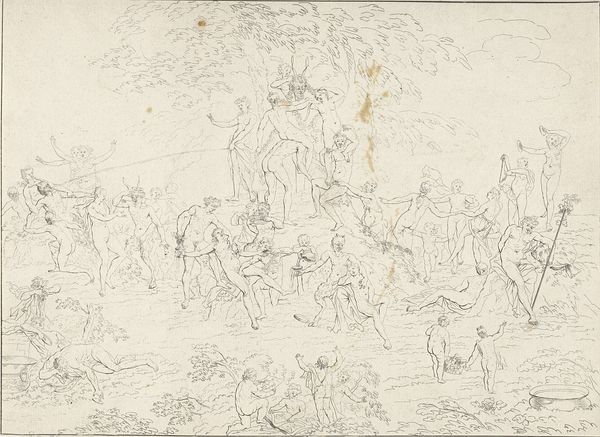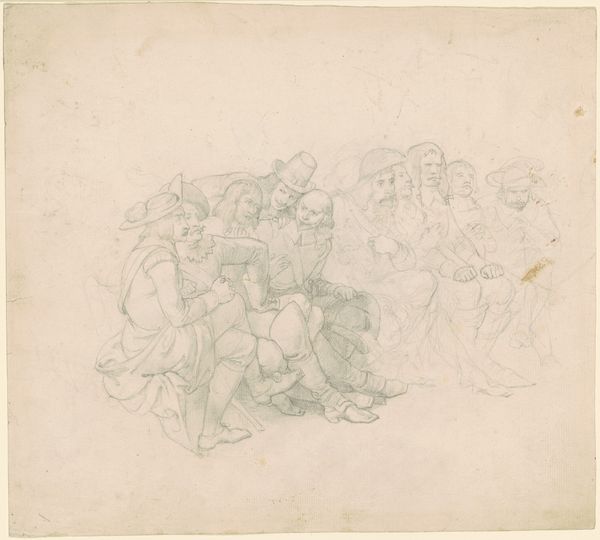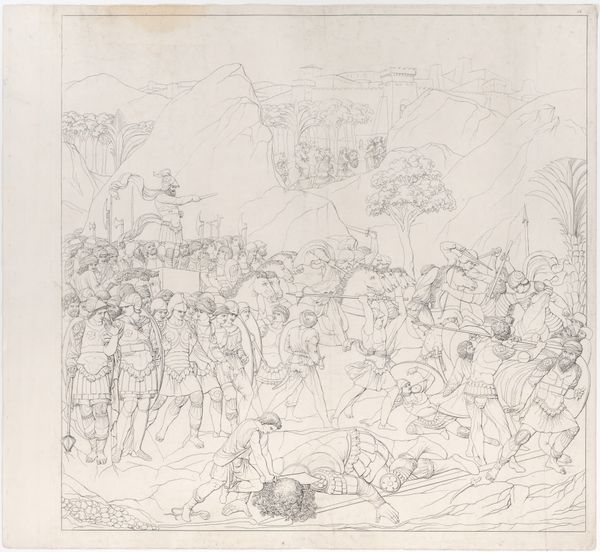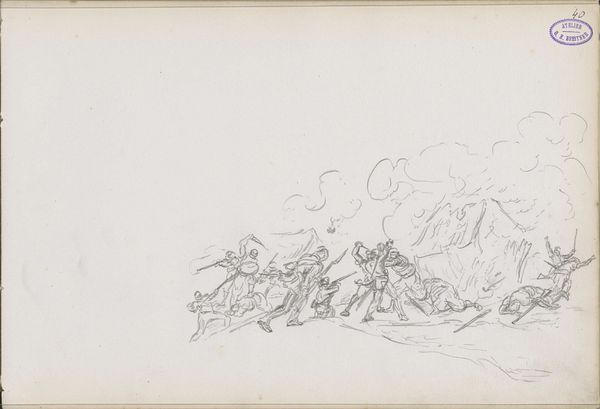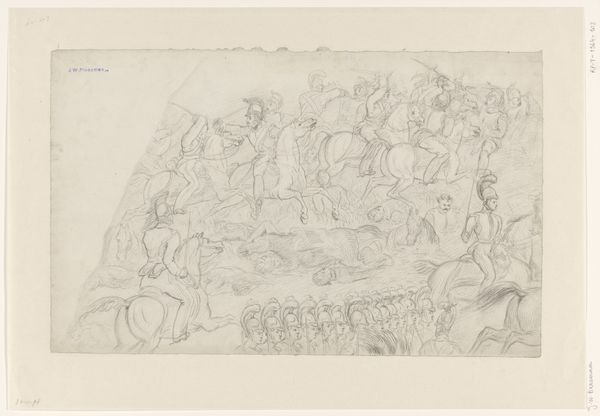
#
light pencil work
#
pen sketch
#
pencil sketch
#
personal sketchbook
#
ink drawing experimentation
#
pen-ink sketch
#
sketchbook drawing
#
pencil work
#
watercolour illustration
#
sketchbook art
Dimensions: height 208 mm, width 321 mm
Copyright: Rijks Museum: Open Domain
Curator: Here we have a pen sketch, delicately rendered, titled "Koningin van Sheba bij Salomo (?)," which translates to "Queen of Sheba Visiting Solomon(?)." The artist is Zacharias Blijhooft, and it's dated 1667. It's part of the Rijksmuseum's collection. Editor: It's immediately striking how light and airy this sketch feels. The composition is so open; there's a sense of vast space conveyed despite the delicate lines. Curator: The subject itself—the Queen of Sheba's legendary visit—carries considerable political and cultural weight. Depictions of the Queen often served to explore themes of diplomacy, wisdom, and cross-cultural exchange in the 17th century, a period marked by increasing global interactions. The uncertainty in the title itself highlights the challenge in definitively labeling historical narratives, doesn't it? Editor: Absolutely. And notice how the figures are arranged. The Queen, leading her procession, is clearly differentiated through the use of line weight and the flowing drapery. It really directs your eye across the plane, creating a dynamic movement towards the right side, towards a more lightly sketched structure in the distance. Is that meant to be Solomon's palace? Curator: Quite possibly. Blijhooft, although a relatively obscure figure today, was working within a well-established visual tradition. Artists used such depictions to comment on contemporary events and power structures. The Queen's journey to seek wisdom from Solomon was a popular metaphor for diplomatic missions, so such themes found echoes in his Dutch context as well. Editor: What interests me is the sketch-like quality itself. The artist wasn't striving for perfect representation; it feels like an exploration of form, light, and movement rather than a finished, polished statement. Curator: That's very true. This piece might well have resided in a personal sketchbook; a space for working through ideas and experimenting with composition. Editor: Exactly! It is precisely this element which I think contributes the greatest to the picture plane—allowing viewers to explore, analyze, interpret on a deeply, personally impactful level. Curator: Ultimately, Blijhooft’s piece reflects both a historical interest in biblical narratives and the socio-political landscape in which the work was created. Editor: And the very sketch-like quality makes you as a viewer more active in constructing the narrative, completing it almost yourself in your imagination.
Comments
No comments
Be the first to comment and join the conversation on the ultimate creative platform.
